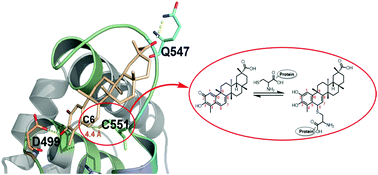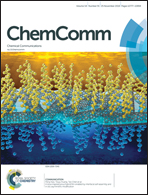Celastrol binds to its target protein via specific noncovalent interactions and reversible covalent bonds†‡
Abstract
Celastrol is one of the most studied natural products. Our studies show for the first time that celastrol can bind to its target protein via specific noncovalent interactions that position celastrol next to the thiol group of the reactive cysteine for reversible covalent bond formation. Such specific noncovalent interactions confer celastrol binding specificity and demonstrate the feasibility of improving the efficacy and selectivity of celastrol for therapeutic applications.



 Please wait while we load your content...
Please wait while we load your content...